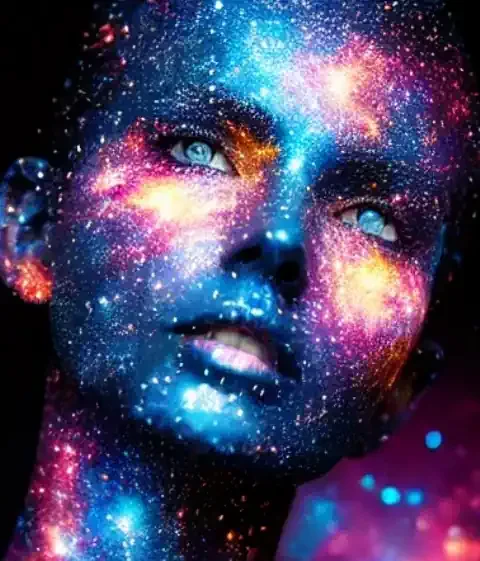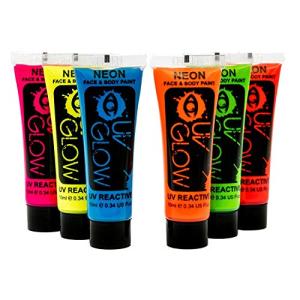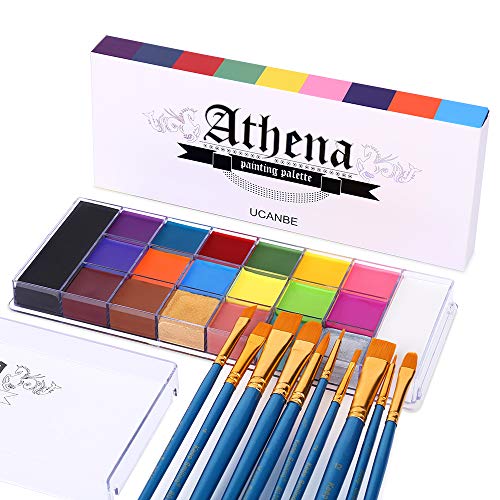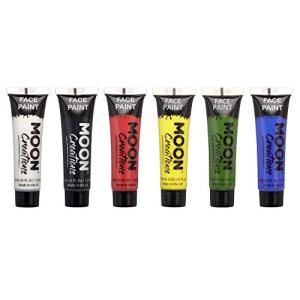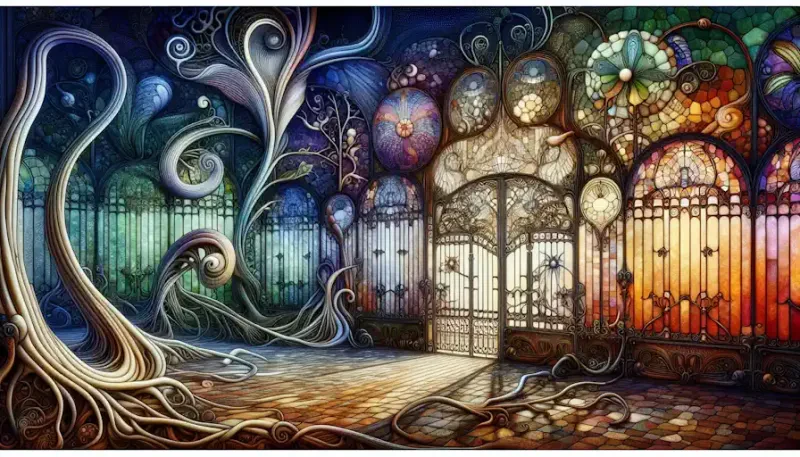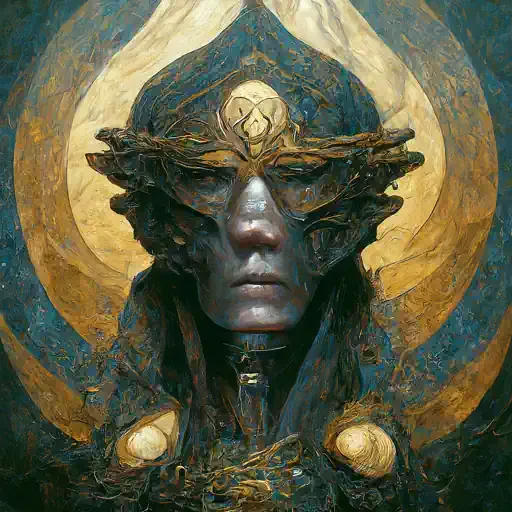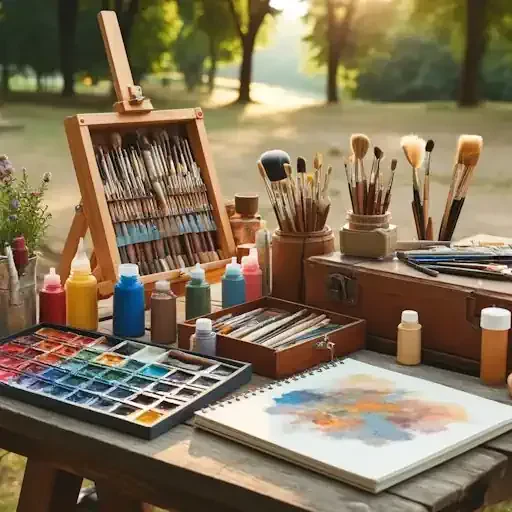Ancient Origins And Cultural Significance
Human adornment is as old as humanity itself, with body painting holding a prominent place in our ancestors' lives. Far more than mere decoration, it served as a powerful tool for communication, ritual, and self-expression.
Early humans adorned themselves with pigments derived from natural sources such as clay, charcoal, and berries. These markings held deep significance, often signifying tribal affiliations, social status, or rites of passage. The act of painting one's body was often a communal affair, strengthening bonds within the group and reinforcing shared beliefs.
Across diverse cultures and continents, body painting played an integral role in rituals and ceremonies. It was used to mark important life events, such as births, deaths, and weddings. Intricate patterns and symbols were painted on bodies to invoke spirits, offer protection, and connect with the divine. In some cultures, body painting was even believed to possess magical powers, capable of influencing events and outcomes.
The spiritual and religious significance of body painting cannot be overstated. It served as a bridge between the earthly and spiritual realms, allowing individuals to transcend their physical existence and connect with a higher power. In many cultures, body painting was an integral part of shamanic practices, aiding in trance states and facilitating communication with the spirit world.
Ancient civilizations such as Egypt, Greece, and Rome also embraced body painting as a form of personal adornment and cultural expression. Egyptian hieroglyphs depict the use of henna and other pigments to decorate the body, while Greek athletes adorned themselves with oil and pigments before competing in the Olympic Games. Roman gladiators, too, painted their bodies for battle, both for protection and intimidation.
The evolution of body painting throughout history is a testament to its enduring appeal and adaptability. From its humble beginnings as a form of primitive communication to its current status as a recognized art form, body painting has continuously evolved and transformed, reflecting the changing needs and desires of humanity. Whether used for ritualistic purposes, artistic expression, or personal adornment, body painting remains a powerful tool for self-expression and cultural identity.
Modern Body Painting As An Art Form
The 20th century saw a renaissance in body painting, as it transitioned from its ancient roots into a recognized and celebrated art form. With the rise of avant-garde movements and a growing appreciation for unconventional forms of expression, body painting found a new home in the world of contemporary art. Artists began to experiment with the human body as a living canvas, pushing the boundaries of creativity and challenging traditional notions of art.
Pioneering artists like Yves Klein, who used nude models covered in blue pigment as "living brushes," and Piero Manzoni, who signed people's bodies as works of art, paved the way for a new generation of body painters. Their groundbreaking work challenged the conventional art market and sparked conversations about the nature of art, the body, and the relationship between the two.
Body painting festivals and competitions emerged as platforms for artists to showcase their talents and connect with a wider audience. Events like the World Bodypainting Festival in Austria and the North American Bodypainting Championship attract thousands of artists and enthusiasts from around the globe, showcasing the incredible diversity and creativity within the body painting community. These gatherings not only celebrate the artistic achievements of body painters but also foster a sense of community and shared passion for this unique art form.
Body painting has also found its place in the realm of performance art, where the human body becomes a dynamic and interactive canvas. Performers use their bodies as a medium to tell stories, express emotions, and challenge social norms. Body painting becomes an integral part of the performance, transforming the artist into a living work of art that evolves and interacts with the audience in real time.
The recognition and acceptance of body painting in mainstream art have been a gradual process, but today, it is increasingly recognized as a legitimate and valuable art form. Museums and galleries are exhibiting body painting alongside traditional paintings and sculptures, acknowledging its unique contribution to the art world. Art critics and scholars are studying the history, techniques, and cultural significance of body painting, further solidifying its place in the artistic canon.
Techniques, Tools, And Materials
The art of body painting requires a unique blend of artistic vision and technical skill. A wide array of tools, materials, and techniques are employed to create stunning and intricate designs on the human canvas. The choice of body paint is crucial, with a wide range of options available depending on the desired effect and duration.
Water-based paints are a popular choice for their ease of use and removal. They are non-toxic and gentle on the skin, making them ideal for large-scale designs and events where quick application and removal are necessary. Alcohol-based paints offer a longer-lasting alternative, often used for intricate details and fine lines. These paints dry quickly and are resistant to smudging, making them ideal for creating complex patterns and textures.
For a more vibrant and intense look, artists may opt for UV or neon paints, which glow under blacklight. These paints are often used for nighttime events and performances, adding an extra dimension of excitement and visual appeal. Metallic and glitter paints are also available, allowing artists to create shimmering and eye-catching effects.
In addition to paint, body painters use a variety of tools to achieve different textures and effects. Brushes of varying sizes and shapes are essential for creating fine lines, blending colors, and adding details. Sponges are used for applying large areas of color, creating gradients, and achieving a smooth, even finish. Airbrushes allow for precise application and blending of paint, creating a soft, airbrushed look.
Stencils and templates can be used to create intricate patterns and designs with accuracy and speed. These tools are especially useful for beginners or for creating complex designs with multiple layers. Freehand techniques, on the other hand, allow for greater artistic expression and creativity, enabling artists to create unique and personalized designs.
Preparing the skin for body painting is crucial for achieving a flawless and long-lasting result. The skin should be clean, dry, and free of oils or lotions. A barrier cream or primer may be applied to protect the skin and help the paint adhere better. After painting, a setting spray or powder can be used to seal the design and prevent smudging.
Removing body paint depends on the type of paint used. Water-based paints can be easily washed off with soap and water, while alcohol-based paints may require a special remover. It is important to follow the manufacturer's instructions for safe and effective removal of body paint. Proper aftercare, such as moisturizing the skin, is essential to maintain skin health after body painting.
Diverse Styles And Genres
The world of body painting is a kaleidoscope of styles, ranging from the hyperrealistic to the abstract, from the whimsical to the thought-provoking. Each artist brings their unique vision and creative flair to the canvas of the human body, resulting in a breathtaking array of diverse genres and expressions.
Realistic and hyperrealistic body painting pushes the boundaries of illusion, transforming the human form into living sculptures and mimicking textures and patterns found in nature. Artists meticulously recreate the intricate details of animal fur, the delicate veins of a leaf, or the shimmering scales of a fish, blurring the lines between reality and art. This genre demands exceptional skill and patience, as artists must meticulously blend colors, layer pigments, and master the art of trompe-l'oeil to achieve a lifelike illusion.
Abstract and avant-garde body painting, on the other hand, breaks free from the constraints of representation, exploring the limitless possibilities of color, form, and texture. Artists experiment with bold geometric shapes, swirling lines, and unexpected color combinations, creating mesmerizing and thought-provoking designs that challenge our perception of the human body. This genre allows for greater freedom of expression, as artists can tap into their emotions and subconscious to create truly unique and personal works of art.
Animal and nature-inspired body art celebrates the beauty and diversity of the natural world. Artists draw inspiration from the vibrant colors of birds, the intricate patterns of insects, or the majestic forms of animals, transforming human bodies into living tributes to nature. This genre often carries a deeper message about our interconnectedness with the environment and the importance of preserving the delicate balance of ecosystems.
Fantasy and sci-fi body painting transports us to imaginary worlds, where mythical creatures, futuristic landscapes, and otherworldly characters come to life on the human canvas. Artists create elaborate costumes, intricate prosthetics, and detailed body paint to immerse viewers in fantastical realms. This genre often blends elements of realism and imagination, resulting in captivating and otherworldly creations that spark our sense of wonder and adventure.
Body painting can also be a powerful tool for social and political commentary. Artists use their bodies as canvases to raise awareness about important issues, challenge societal norms, and advocate for change. They may create powerful images that depict social injustices, environmental destruction, or political corruption, using their art as a platform for activism and social change.
Body Painting In Popular Culture
Body painting has transcended the boundaries of the art world, making a vibrant splash in popular culture. Its versatility and visual impact have captivated audiences across various mediums, leaving an indelible mark on film, television, music, fashion, and advertising.
In the realm of film and television, body painting has been used to create memorable characters, enhance visual storytelling, and transport viewers to fantastical worlds. From the blue-skinned Na'vi in Avatar to the mystical creatures in Pan's Labyrinth, body painting has played a crucial role in bringing imaginative characters to life. It has also been used to create stunning visual effects in movies like X-Men and Guardians of the Galaxy, where body paint is used to simulate elaborate costumes and alien appearances.
Music videos and stage performances have embraced body painting as a way to enhance the visual spectacle and create a lasting impression on audiences. Artists like Lady Gaga, Katy Perry, and Nicki Minaj have incorporated body painting into their performances, using it to create bold and avant-garde looks that complement their music and stage personas. Body painting has also become a staple of music festivals and concerts, where attendees use it as a form of self-expression and creative freedom.
The fashion industry has long been fascinated by the transformative power of body painting. Designers have collaborated with body painters to create unique and eye-catching looks for runway shows and editorials. Body painting has been used to showcase intricate designs, create the illusion of clothing, and add an element of surprise and intrigue to fashion presentations. It has also become a popular trend in beauty and cosmetics, with makeup artists using body painting techniques to create stunning and artistic looks for photoshoots and special events.
Advertising and marketing have also recognized the power of body painting to capture attention and create a lasting impression. Brands have used body-painted models in their campaigns to showcase products, create buzz, and generate social media engagement. Body painting has been used to promote everything from cars and electronics to food and beverages, proving its versatility and appeal across diverse industries.
The influence of celebrities has further propelled body painting into the mainstream. Celebrities like Kim Kardashian, Rihanna, and Beyoncé have embraced body painting, sharing their body art creations on social media and inspiring countless fans to experiment with this unique form of self-expression. Their endorsements have helped to normalize body painting and make it more accessible to a wider audience.
Future Trends And Innovations
As with all art forms, body painting is not static but continually evolving, embracing new technologies, materials, and ideas. The future of body painting promises to be as vibrant and diverse as its past, with innovations that push the boundaries of creativity and redefine what it means to be a living canvas.
Advancements in technology are poised to revolutionize the way body painting is created and experienced. Digital tools like 3D scanning and printing are enabling artists to design intricate and personalized body art with unprecedented precision. Augmented reality (AR) and virtual reality (VR) are opening up new possibilities for interactive and immersive body painting experiences, where viewers can engage with the art in dynamic and unexpected ways.
The emergence of new materials and techniques is also expanding the creative palette for body painters. Biodegradable and non-toxic paints are becoming increasingly popular, reflecting a growing awareness of environmental sustainability. Glow-in-the-dark and thermochromic paints that change color with temperature are adding new dimensions of interactivity and visual appeal.
Body painting is also finding new applications beyond the realm of art and entertainment. In the medical field, it is being used to help patients with skin conditions and scars regain their confidence and self-esteem. Therapeutic body painting workshops are empowering individuals to express their emotions and connect with their bodies in a safe and supportive environment.
The future of body painting lies not only in technological advancements and material innovations but also in its continued evolution as a powerful tool for self-expression and social change. As more and more people embrace body painting as a way to celebrate their individuality, challenge societal norms, and advocate for important causes, the art form will continue to evolve and adapt, reflecting the ever-changing needs and desires of humanity. The human body as a canvas will remain a fertile ground for creativity, innovation, and social commentary, inspiring artists and audiences alike to explore the limitless possibilities of this unique and captivating art form.
Summary
Body painting, an ancient form of human expression, has evolved from its ritualistic and ceremonial origins into a recognized contemporary art form. It has found its place in modern art exhibitions, festivals, and performances, pushing the boundaries of creativity and challenging traditional notions of art. This diverse art form utilizes various techniques, tools, and materials, ranging from water-based paints to airbrushes and stencils, to create stunning designs on the human canvas. Body painting encompasses a wide array of styles, including realistic, abstract, animal-inspired, fantasy, and even social commentary. It has permeated popular culture, leaving its mark on film, television, music, fashion, and advertising. Looking towards the future, technological advancements and new materials promise to further revolutionize this art form, opening up new possibilities for creativity and self-expression.
